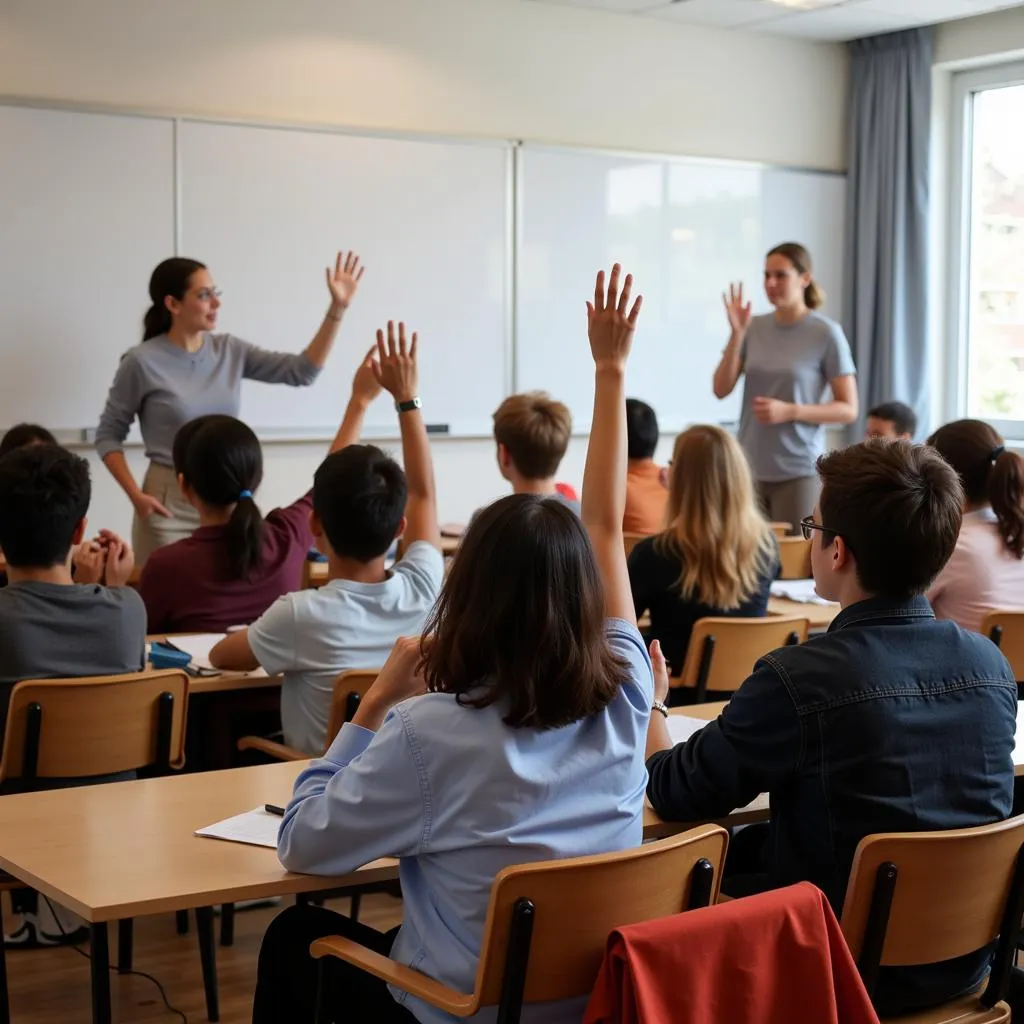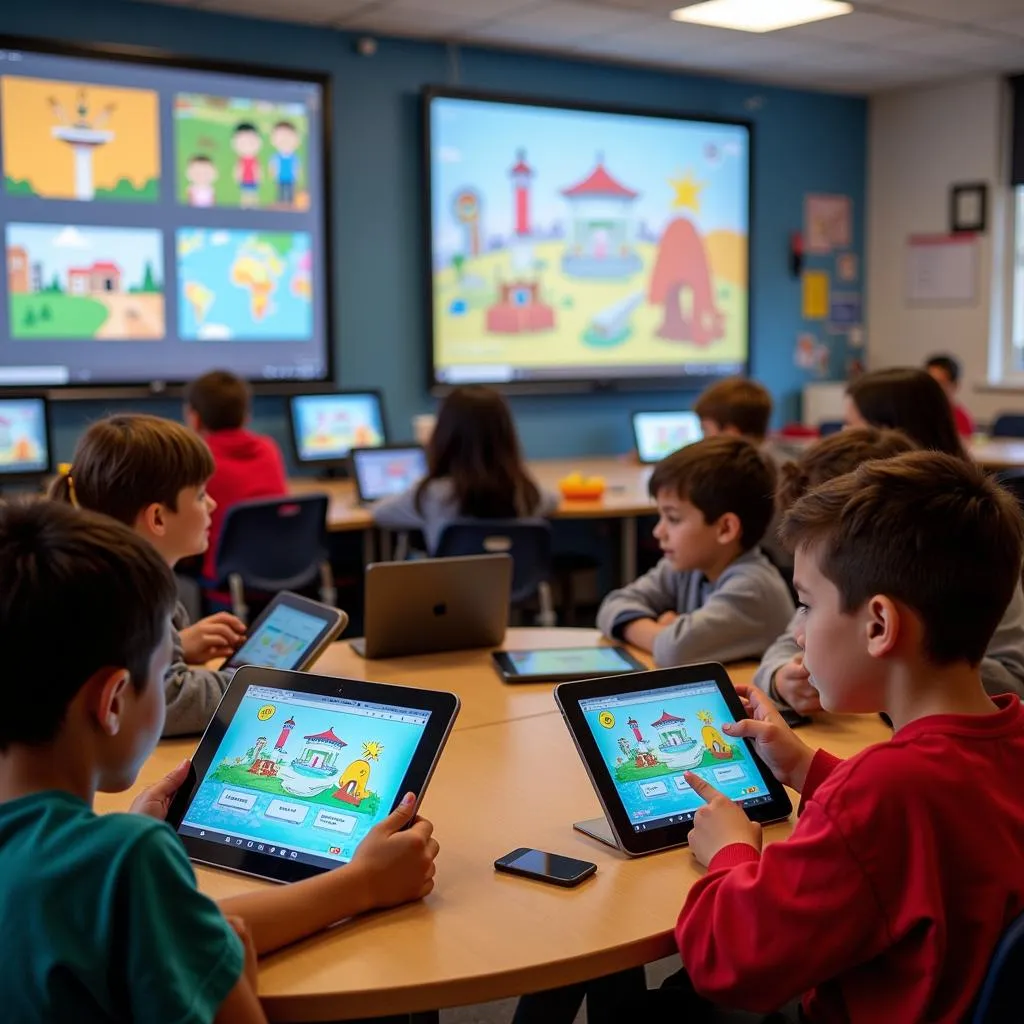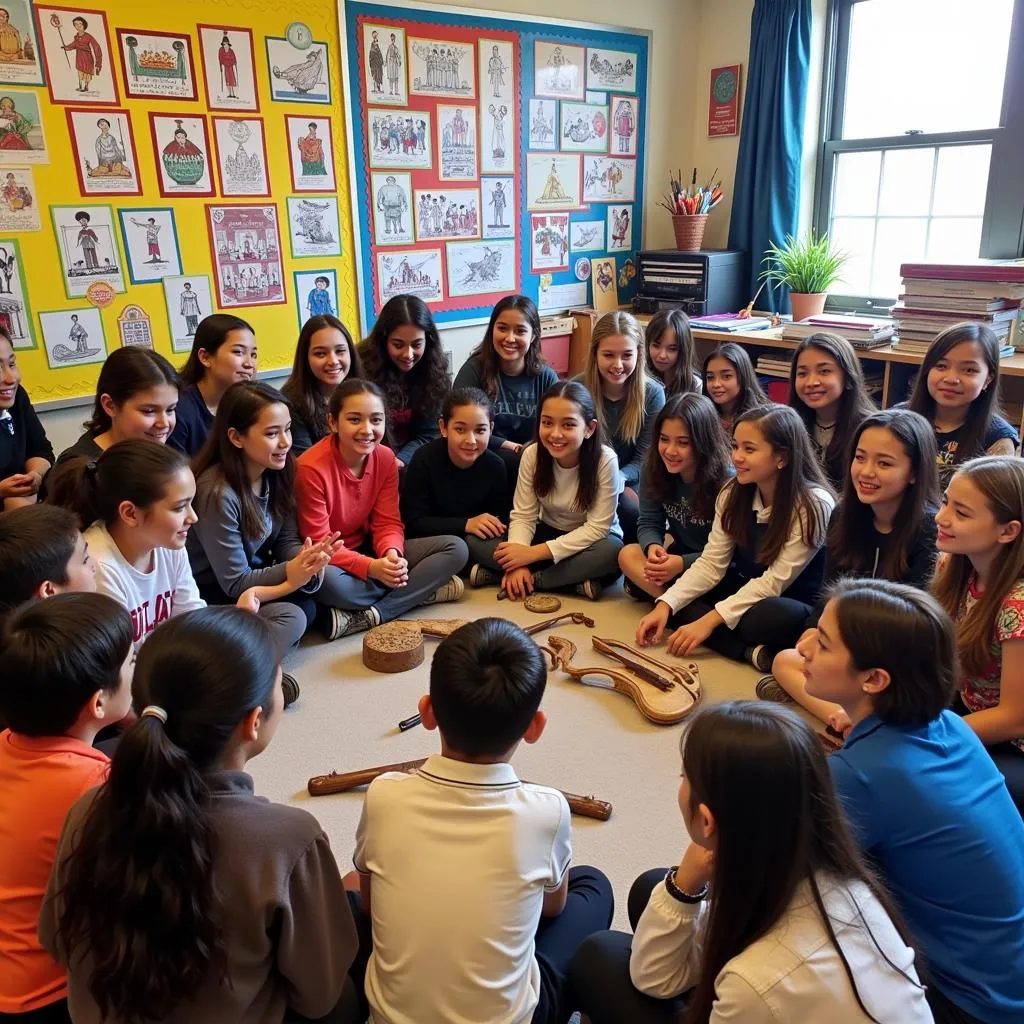The IELTS Reading test can be challenging, especially when it comes to unfamiliar topics. Today, we’ll explore a sample reading passage about the impact of cultural dances on school events, providing you with valuable practice and insights into this interesting subject.
Nội dung bài viết
- Passage 1 – Easy Text
- The Role of Cultural Dances in School Events
- Questions 1-5
- Questions 6-10
- Passage 2 – Medium Text
- The Impact of Cultural Dances on School Events: A Multifaceted Approach
- Questions 11-14
- Questions 15-19
- Passage 3 – Hard Text
- The Transformative Power of Cultural Dances in Educational Settings: A Comprehensive Analysis
- Questions 20-26
- Questions 27-32
- Questions 33-40
- Answer Key
- Passage 1 – Easy Text
- Passage 2 – Medium Text
- Passage 3 – Hard Text
How traditional music and dance are incorporated into modern education is becoming increasingly relevant in schools worldwide. Let’s dive into our IELTS Reading practice with passages of varying difficulty levels, focusing on this theme.
Passage 1 – Easy Text
The Role of Cultural Dances in School Events
Cultural dances have become an integral part of many school events, offering students a unique opportunity to embrace diversity and learn about different traditions. These performances not only enhance the entertainment value of school gatherings but also serve as an educational tool, promoting cultural awareness and fostering a sense of community among students from various backgrounds.
In recent years, schools have recognized the significant impact that cultural dances can have on their events. From annual festivals to international days, these performances add color, excitement, and a global perspective to school celebrations. Students participating in these dances often gain confidence and develop a deeper appreciation for their own heritage as well as that of their peers.
Moreover, the inclusion of cultural dances in school events has been shown to improve student engagement and promote inclusivity. It provides a platform for students who might not excel in traditional academic subjects to showcase their talents and contribute to the school community. This approach to cultural education helps create a more welcoming and diverse school environment.
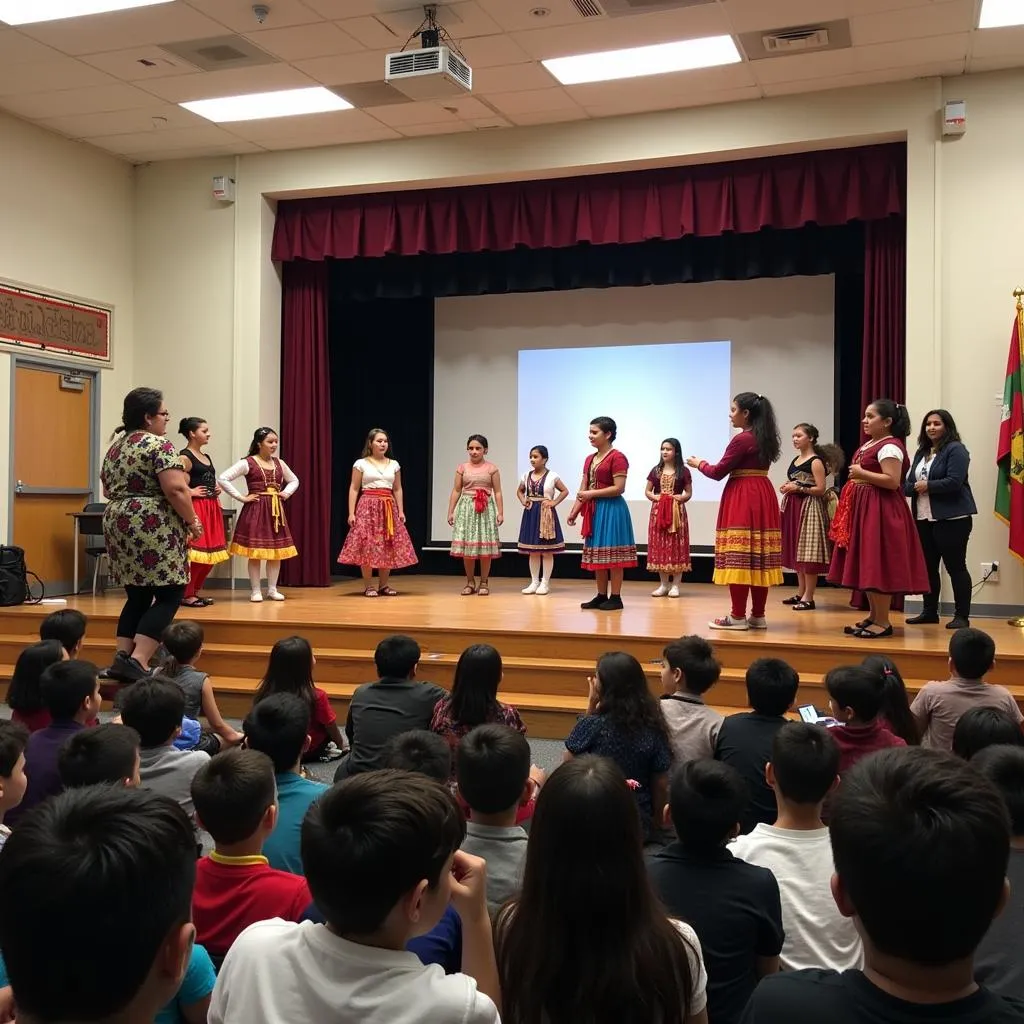 Students performing cultural dance at school event
Students performing cultural dance at school event
Questions 1-5
Do the following statements agree with the information given in the reading passage?
Write:
TRUE if the statement agrees with the information
FALSE if the statement contradicts the information
NOT GIVEN if there is no information on this
- Cultural dances are only used for entertainment purposes in school events.
- Participating in cultural dances can boost students’ self-esteem.
- Schools have been incorporating cultural dances in their events for decades.
- Cultural dance performances can help create a more inclusive school environment.
- All students are required to participate in cultural dance performances.
Questions 6-10
Complete the sentences below.
Choose NO MORE THAN TWO WORDS from the passage for each answer.
- Cultural dances help students __ __ and learn about different traditions.
- School gatherings are __ by the inclusion of cultural dance performances.
- Cultural dances add a __ __ to school celebrations.
- Students who may not excel academically can __ __ through cultural dance performances.
- The incorporation of cultural dances in schools helps create a more __ school environment.
Passage 2 – Medium Text
The Impact of Cultural Dances on School Events: A Multifaceted Approach
The integration of cultural dances into school events has emerged as a powerful tool for promoting diversity, enhancing student engagement, and fostering a sense of community within educational institutions. This practice, which has gained significant traction in recent years, offers a multitude of benefits that extend far beyond mere entertainment.
One of the primary advantages of incorporating cultural dances into school events is the promotion of cultural awareness and appreciation. By exposing students to diverse dance forms from various cultures, schools create an environment that celebrates differences and encourages mutual understanding. This exposure helps to break down cultural barriers and combat stereotypes, fostering a more inclusive and tolerant school community.
Furthermore, the inclusion of cultural dances in school events provides an excellent opportunity for experiential learning. Students who participate in these performances gain first-hand knowledge of different cultures, their traditions, and their historical contexts. This hands-on approach to cultural education is often more effective than traditional classroom instruction, as it engages multiple senses and creates lasting memories.
The impact of cultural dances on school events extends to the development of important life skills among students. Preparing for and participating in dance performances requires dedication, teamwork, and time management skills. Students learn to collaborate effectively with their peers, often across cultural boundaries, fostering intercultural communication skills that are invaluable in today’s globalized world.
Moreover, cultural dance performances can serve as a catalyst for parental and community involvement in school activities. These events often draw families and community members to the school, creating opportunities for stronger school-community partnerships. This increased engagement can lead to a more supportive learning environment and enhanced resources for cultural education programs.
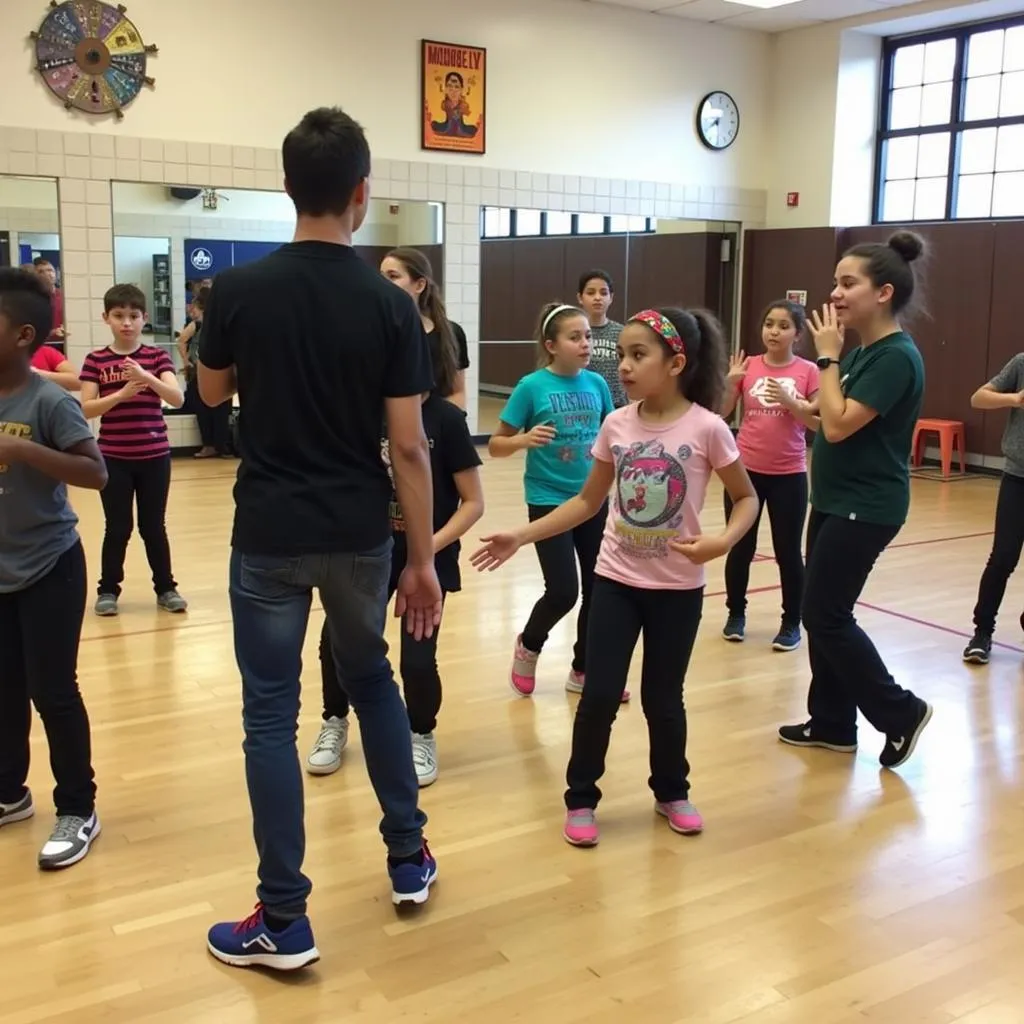 Students practicing cultural dance at school
Students practicing cultural dance at school
From an academic perspective, the integration of cultural dances into school events can have a positive impact on student performance. Research has shown that arts education, including dance, can enhance cognitive skills, improve memory, and boost creative thinking. These benefits can translate into improved academic performance across various subjects.
It is important to note, however, that the successful implementation of cultural dances in school events requires careful planning and sensitivity. Schools must ensure that the dances are presented accurately and respectfully, avoiding cultural appropriation or misrepresentation. This often involves collaborating with cultural experts or community members to ensure authenticity and proper context.
In conclusion, the impact of cultural dances on school events is multifaceted and far-reaching. By embracing this practice, schools can create more inclusive, engaging, and culturally rich environments that prepare students for success in an increasingly interconnected world.
Questions 11-14
Choose the correct letter, A, B, C, or D.
-
According to the passage, incorporating cultural dances into school events:
A) Is a recent trend
B) Has been a long-standing tradition
C) Is only beneficial for entertainment
D) Is mandatory for all schools -
The text suggests that cultural dance performances in schools:
A) Replace traditional classroom instruction
B) Are less effective than classroom learning
C) Complement classroom instruction on cultural education
D) Are only suitable for students with dance backgrounds -
Participating in cultural dance performances helps students develop:
A) Academic skills only
B) Dance skills only
C) Life skills including teamwork and time management
D) Skills unrelated to their education -
The passage indicates that cultural dance events in schools:
A) Discourage parental involvement
B) Have no effect on community engagement
C) Can strengthen school-community relationships
D) Are only attended by students
Questions 15-19
Complete the summary below.
Choose NO MORE THAN TWO WORDS from the passage for each answer.
Cultural dances in school events offer numerous benefits. They promote (15) __ __ and help break down cultural barriers. These performances provide opportunities for (16) __ __, allowing students to gain first-hand knowledge of different cultures. Participating in these dances helps develop important (17) __ __, including teamwork and intercultural communication. Research suggests that dance education can enhance (18) __ __ and improve academic performance. However, schools must ensure (19) __ __ when implementing cultural dances to avoid misrepresentation.
Passage 3 – Hard Text
The Transformative Power of Cultural Dances in Educational Settings: A Comprehensive Analysis
The integration of cultural dances into school events has emerged as a paradigm-shifting approach to fostering diversity, enhancing student engagement, and promoting cross-cultural understanding within educational institutions. This multifaceted phenomenon has garnered increasing attention from educators, policymakers, and researchers alike, owing to its profound implications for student development and school culture.
At its core, the incorporation of cultural dances into school events serves as a catalyst for cultural literacy and intercultural competence. By exposing students to a diverse array of dance forms, each imbued with its own historical, social, and artistic significance, schools create an immersive environment that transcends traditional pedagogical approaches. This experiential learning modality facilitates a deeper, more nuanced understanding of cultural diversity, effectively challenging ethnocentric perspectives and fostering a more inclusive worldview among students.
The cognitive benefits associated with participation in cultural dance performances are particularly noteworthy. Neuroscientific research has demonstrated that dance activates multiple brain regions simultaneously, enhancing neural plasticity and promoting the development of cognitive flexibility. These neurological effects extend beyond the realm of motor skills, positively impacting academic performance across various disciplines. Students engaged in cultural dance activities often exhibit improved spatial reasoning, enhanced memory function, and heightened creative problem-solving abilities.
Moreover, the psychosocial impact of cultural dance integration in school events cannot be overstated. Participation in these performances provides students with a unique platform for self-expression and identity exploration. This is particularly crucial for students from minority or immigrant backgrounds, who may struggle with cultural dislocation or identity negotiation. By providing a space for cultural celebration and validation, schools can significantly enhance these students’ sense of belonging and self-esteem, thereby promoting overall well-being and academic engagement.
The ripple effects of cultural dance integration extend far beyond the individual student level, permeating the broader school ecosystem. These events serve as powerful community-building mechanisms, bridging divides between diverse student groups and fostering a collective school identity that celebrates multiculturalism. Furthermore, they provide an invaluable opportunity for parental and community engagement, strengthening the school-community nexus and creating a more supportive, culturally responsive learning environment.
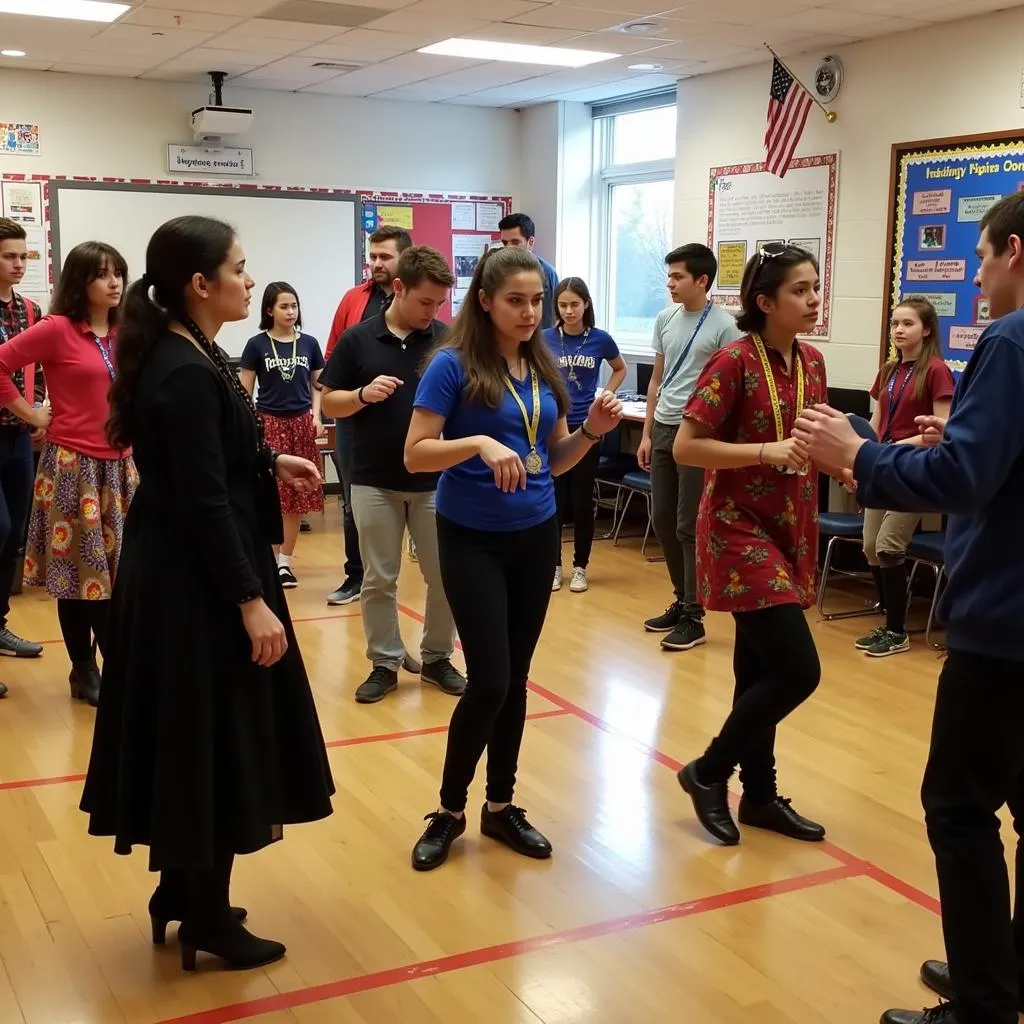 Diverse students learning cultural dance in workshop
Diverse students learning cultural dance in workshop
However, it is imperative to acknowledge the potential pitfalls and challenges associated with implementing cultural dance programs in school events. The risk of cultural appropriation or misrepresentation looms large, necessitating a thoughtful, culturally sensitive approach to program design and execution. Educators must strike a delicate balance between celebration and respect, ensuring that cultural dances are presented with historical accuracy and contextual depth. This often requires collaboration with cultural experts and community representatives to ensure authenticity and avoid perpetuating stereotypes.
Furthermore, the logistical considerations of integrating cultural dances into school events can be daunting. Issues such as time allocation, resource distribution, and equitable participation must be carefully navigated to ensure that these programs do not inadvertently exacerbate existing inequalities within the school system. A comprehensive, inclusive approach that provides opportunities for all students, regardless of their background or prior dance experience, is essential for maximizing the benefits of cultural dance integration.
In conclusion, the impact of cultural dances on school events represents a powerful paradigm for promoting diversity, enhancing student development, and fostering a more inclusive educational environment. By embracing this approach, schools can create rich, multidimensional learning experiences that prepare students for success in an increasingly interconnected global society. However, realizing the full potential of cultural dance integration requires ongoing commitment, cultural sensitivity, and a willingness to critically examine and refine implementation strategies. As educational institutions continue to grapple with the challenges of diversity and inclusion, the transformative power of cultural dances offers a promising pathway towards creating more equitable, culturally responsive learning environments.
Questions 20-26
Complete the summary below.
Choose NO MORE THAN TWO WORDS from the passage for each answer.
The integration of cultural dances in school events is a (20) __ __ approach to fostering diversity and enhancing student engagement. This practice serves as a catalyst for (21) __ __ and intercultural competence. Neuroscientific research has shown that dance participation enhances (22) __ __ and promotes cognitive flexibility. These performances provide a platform for students to explore their (23) __ and can be particularly beneficial for students from minority backgrounds who may struggle with (24) __ __. However, implementing such programs comes with challenges, including the risk of (25) __ __ and the need for a culturally sensitive approach. Schools must also address (26) __ __ to ensure equitable participation in these programs.
Questions 27-32
Do the following statements agree with the claims of the writer in the reading passage?
Write:
YES if the statement agrees with the claims of the writer
NO if the statement contradicts the claims of the writer
NOT GIVEN if it is impossible to say what the writer thinks about this
- Cultural dance integration in schools only benefits students from diverse backgrounds.
- Participation in cultural dances can improve students’ problem-solving abilities.
- Cultural dance events in schools always lead to better academic performance.
- The implementation of cultural dance programs requires collaboration with cultural experts.
- All students should be required to participate in cultural dance performances.
- Cultural dance integration in schools can help create a more inclusive learning environment.
Questions 33-40
Complete the sentences below.
Choose NO MORE THAN THREE WORDS from the passage for each answer.
- Cultural dances in school events serve as a catalyst for __ and intercultural competence.
- Dance activates multiple brain regions simultaneously, enhancing __ and promoting cognitive flexibility.
- Participation in cultural dance performances provides students with a unique platform for __ and identity exploration.
- Cultural dance events in schools serve as powerful __, bridging divides between diverse student groups.
- Educators must strike a __ between celebration and respect when implementing cultural dance programs.
- The __ of integrating cultural dances into school events can be challenging for administrators.
- A __ that provides opportunities for all students is essential for maximizing the benefits of cultural dance integration.
- The impact of cultural dances on school events represents a powerful paradigm for promoting diversity and creating __.
Answer Key
Passage 1 – Easy Text
- FALSE
- TRUE
- NOT GIVEN
- TRUE
- NOT GIVEN
- embrace diversity
- enhanced
- global perspective
- showcase talents
- welcoming
Passage 2 – Medium Text
- A
- C
- C
- C
- cultural awareness
- experiential learning
- life skills
- cognitive skills
- careful planning
Passage 3 – Hard Text
- paradigm-shifting
- cultural literacy
- neural plasticity
- identity
- cultural dislocation
- cultural appropriation
- logistical considerations
- NO
- YES
- NOT GIVEN
- YES
- NOT GIVEN
- YES
- cultural literacy
- neural plasticity
- self-expression
- community-building mechanisms
- delicate balance
- logistical considerations
- comprehensive, inclusive approach
- rich, multidimensional learning experiences
This comprehensive IELTS Reading practice test focused on “The impact of cultural dances on school events” provides valuable experience in tackling various question types and difficulty levels. Remember to manage your time effectively and practice regularly to improve your performance in the IELTS Reading section.
